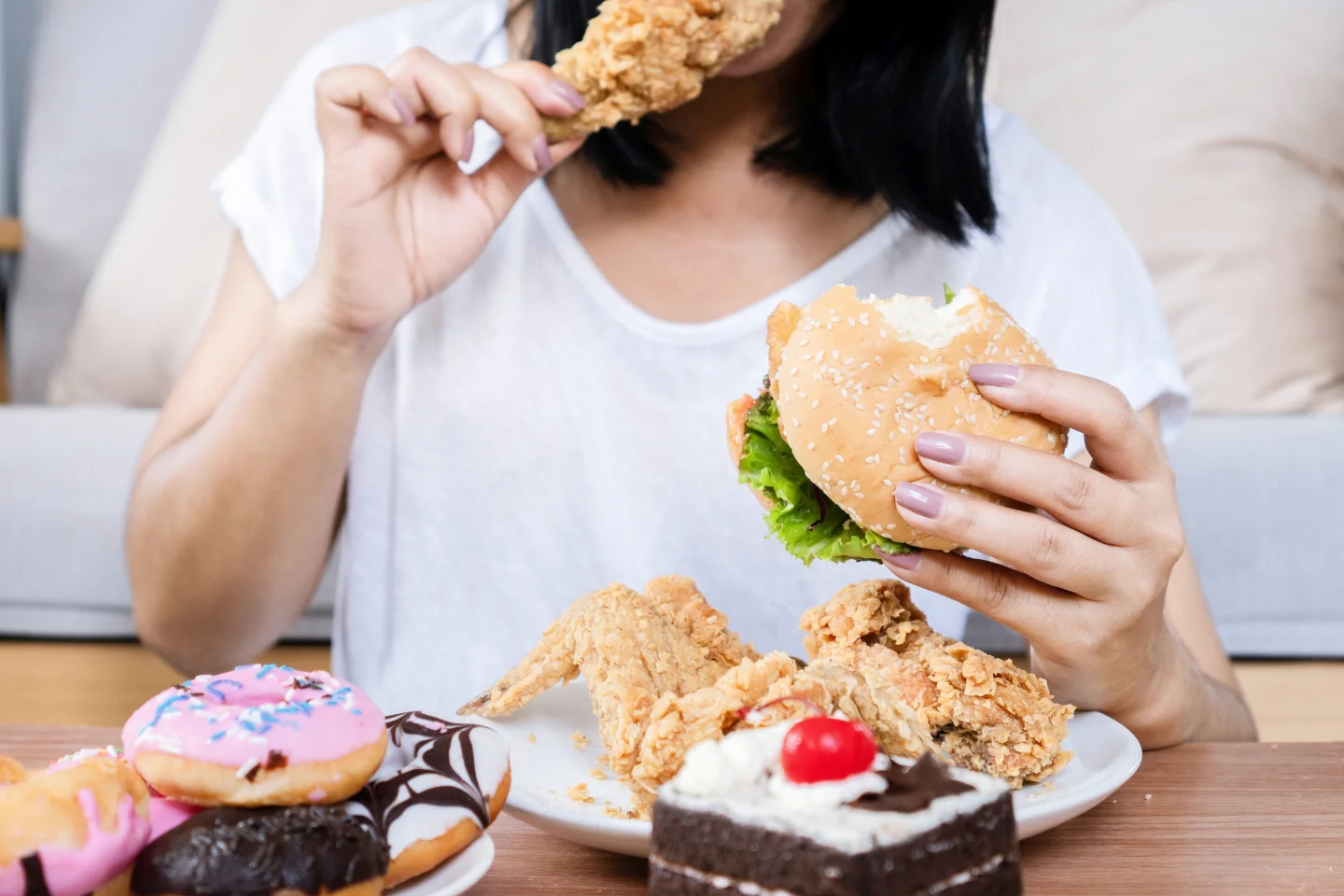Introduction: What You’re Experiencing
Have you ever found yourself standing in front of the fridge, not because you’re hungry—but because you’re overwhelmed, lonely, stressed, or just… numb?
Maybe it’s the late-night snacking that spirals into a binge. Or the “just one bite” that turns into an entire bag, followed by guilt, shame, and the promise to “start again tomorrow.”
If this is you, you’re not lazy or out of control. You’re human—and emotional eating is far more common (and complex) than most people realize.
What Is Emotional or Binge Eating?
Clinically, emotional eating refers to using food to soothe, suppress, or escape difficult emotions rather than to satisfy physical hunger.
Binge eating, on the other hand, involves consuming large quantities of food—often rapidly and in secret—accompanied by feelings of loss of control, shame, or numbness.
In simple terms, it’s eating not because your body needs food, but because your mind and heart are trying to feel better.
Types of Emotional Eating:
- Stress eating
- Comfort eating (when sad, lonely, or angry)
- Reward eating (after a long day or achievement)
- Habitual bingeing (late at night, secretly, or on autopilot)
Common symptoms or thought patterns:
- “I just need something sweet to calm down.”
- Eating even when you’re full—or not hungry at all
- Feeling out of control during eating episodes
- Guilt, regret, or self-criticism afterward
- Promising to “be good tomorrow” but repeating the cycle
The Deeper Problem: Why It Feels So Hard to Break
This isn’t just about food. It’s about feelings.
At some point, your brain learned that food was a fast, reliable way to feel comfort, control, or escape. Over time, this became a subconscious habit—a go-to emotional survival tool.
You’re not weak. You’re coping.
But here’s the challenge: even when you consciously want to stop, your subconscious still sees food as a safety net. That internal tug-of-war leads to:
- Frustration: “Why can’t I just stop?”
- Shame: “What’s wrong with me?”
- Exhaustion: “I’ve tried everything.”
This is where NLP comes in—not to fix you, but to free you from the old emotional wiring.
How NLP Counselling Helps
Neuro-Linguistic Programming (NLP) is a powerful therapeutic approach that helps you shift the subconscious patterns driving emotional and binge eating.
Instead of focusing only on food behaviors, NLP looks at what the eating is trying to do for you emotionally—and then gently rewires that need.
How NLP tools help:
- Reframing – Transform the way your mind associates food with comfort, so cravings naturally lessen.
- Anchoring – Install feelings of calm, safety, or confidence without needing food to access them.
- Timeline Therapy – Release emotional memories or limiting beliefs from the past that fuel your eating patterns today.
- Swish Pattern – Replace the impulse to binge with a new, empowering automatic response.
✨ NLP is fast, non-invasive, and works at the level where change actually happens—your subconscious.
Real-Life Results
“I used to eat secretly almost every night. It wasn’t even about hunger—I just felt overwhelmed, and food was my escape. After just two NLP sessions, something shifted. I still have snacks, but I choose them. I don’t spiral anymore. I feel in control.”
— Sarah, 34
Before NLP: Guilt-ridden binge cycles, daily emotional cravings
After NLP: Balanced choices, emotional clarity, freedom from shame
What to Expect in a Session
If you’ve never tried NLP before, here’s what it looks like:
- A relaxed, confidential conversation about what’s happening for you emotionally and mentally.
- Gentle yet effective techniques that shift inner patterns—no reliving painful memories or strict rules.
- A focus on your goals: more freedom, confidence, and peace with food and self.
This is not traditional talk therapy. It’s change work that helps you get unstuck at the root.
You don’t have to live in a battle with your body—or your plate.
Let’s work together to uncover what’s really going on beneath the cravings, and create lasting, gentle change from the inside out.

